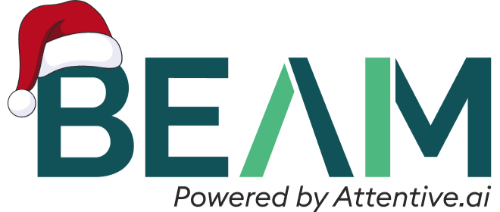Artificial Intelligence (AI) is making significant strides across various industries, and the construction sector is no exception. AI is revolutionizing the preconstruction phase by transforming how projects are planned, estimated, and executed. A report by Accenture suggests that AI could boost profitability by an average of 38 percent by 2035, underscoring its growing importance and impact in construction.
The preconstruction phase, which encompasses essential tasks such as planning, cost estimation, risk assessment, and stakeholder collaboration, has been greatly enhanced by AI. This technology is streamlining processes, improving accuracy, and increasing overall productivity. In this blog, we will delve into the transformative role of AI in the preconstruction phase, providing insights into how AI-powered tools are shaping the future of construction. If you're ready to optimize your preconstruction process, read on to discover how AI can make a significant difference.
What is the Preconstruction Phase?
The preconstruction phase covers all planning activities before construction begins, ensuring that the projects are feasible, cost-effective, and risk-covered.
- Tasks in the preconstruction phase include scope definition, budgeting, scheduling, and risk assessment.
- A strong preconstruction process prevents delays, cost overruns, and failures.
- AI in preconstruction strengthens the preconstruction stage with data-driven decisions.
The pre-construction phase is where every successful building project truly begins. It’s the stage before any ground is broken- when planning, design, budgeting, site analysis, scheduling, and permitting all come together. During this phase, project owners, architects, and contractors collaborate to define the project’s goals, finalize materials, assess risks, and secure the necessary permits. In short, pre-construction is all about setting a strong foundation - ensuring the project runs smoothly, stays on budget, and avoids costly surprises down the road.
Key Activities in the Pre-Construction Phase
The pre-construction phase brings together all the essential groundwork needed to set a project up for success. Here’s what typically happens during this stage:
- Project Definition: Start by clearly defining the project’s scope, objectives, and desired outcomes - setting realistic expectations from day one.
- Site Evaluation: Assess the site’s current conditions, including plumbing, electrical, and HVAC systems, to spot potential challenges early.
- Design Development: Collaborate with architects and engineers to fine-tune the design so it’s both practical and cost-efficient.
- Budgeting & Cost Estimating: Build a detailed estimate that accounts for materials, labor, equipment, and contingencies to stay within budget.
- Scheduling: Create a master timeline and logistics plan that maps out every construction activity to ensure smooth progress and timely completion.
- Risk Assessment: Identify possible risks - from site conditions to supply delays - and outline proactive strategies to minimize their impact.
- Permitting: Obtain all required permits and approvals from local authorities to keep the project compliant.
- Procurement: Plan how materials, equipment, and services will be sourced, including evaluating contractors and suppliers for reliability and cost-effectiveness.
- Team Alignment: Bring all stakeholders - owners, architects, and general contractors - onto the same page to ensure everyone shares the same goals and expectations.
Together, these steps create a strong roadmap for execution, minimizing surprises once construction begins.

Role of AI in Preconstruction
1. Enhanced Planning and Feasibility Studies
- Challenge: Manual feasibility research delays schedules and has inaccuracies.
- AI Solution: AI analyzes large datasets quickly and provides early, accurate project insights.
- Real-World Example: A construction firm planning to build a new commercial complex can leverage AI-powered tools to analyze site conditions, local market trends, and financial projections to determine the project's feasibility. By providing a comprehensive report, AI helps the firm decide whether to proceed, saving time and resources.
2. Automating Takeoff Processes
- Challenge: Manual takeoffs are time-consuming yet critical for creating estimates.
- AI Solution: Tools like Beam AI automate material quantification with high accuracy.
- Example: Consider a construction company working on a large commercial project. By using Beam AI, the company can generate accurate takeoffs simply by uploading plan sets. This automation saves valuable time and ensures that no components are overlooked, thereby preventing delays and cost overruns.

3. Optimizing Design Development
- Challenge: Traditional design development is slow, error-prone and has to undergo many iterations.
- AI Solution: Generative design and AI-powered BIM (Building Information Modeling) creates optimized and compliant designs.
- Example: AI-powered generative design tools can propose innovative design solutions that meet specific criteria, such as sustainability and cost-effectiveness, providing a more refined and optimized design development process. For example, an AI tool can generate thousands of design options for a building, considering factors like sunlight exposure, energy efficiency, and structural integrity, helping architects choose the best design.
4. Streamlining Construction Documentation
- Challenge: Manual extraction of information from specs or documents can lead to errors and delays.
- AI Solution: AI extracts data from drawings, specifications, and contracts automatically.
- Example: An AI-driven tool can automatically generate a project scope document from a set of construction drawings and specifications, ensuring that all project requirements are accurately captured and understood.
5. Smarter Bidding and Negotiation
- Challenge: AI can assist human negotiations with convincing and data-backed insights.
- AI Solution: AI empowers contractors with accurate takeoffs to prepare competitive bids. It can also prioritize and evaluate bids based on cost, timelines and qualifications.
- Example: During the bidding phase for a large commercial project, project owners can use AI to compare multiple contractor bids, evaluating each based on cost, timeline, and previous performance. This objective evaluation ensures that the most qualified contractor is selected, improving project outcomes.
For instance, Beam AI’s high-accuracy takeoffs allow contractors to create precise and competitive bids, increasing their chances of winning the project.
6. Efficient Permitting and Approvals
- Challenge: Regulatory compliance and approvals may delay projects.
- AI Solution: AI checks documents against codes, predicts approval timelines, and flags compliance issues well in advance.
- Example: A large-scale commercial development project requiring multiple permits from various government agencies can benefit significantly from AI-powered permit management. AI tools can ensure that all documents comply with relevant regulations, predict approval times, and expedite the process, allowing the project to start sooner.
For example, an AI system can quickly review and verify compliance of all submitted documents, flagging any issues for correction and predicting approval timelines, thereby streamlining the permitting process and reducing the risk of delays.
Practical Tips for Implementing AI in Preconstruction Phase
We have seen how implementing AI in the preconstruction phase can significantly enhance efficiency, accuracy, and productivity. Here are some practical tips to help you get started:

1. Start Small
Introducing AI can be overwhelming if attempted on a large scale right from the start. Instead, begin with a small, manageable pilot project. This allows your team to understand the capabilities and limitations of AI tools without significant risk. Choose a project that can benefit from AI-driven improvements, such as automating takeoff processes or enhancing feasibility studies. This initial project will serve as a learning experience and provide valuable insights into how AI can be integrated into your workflows.
2. Invest in Training
AI tools are only as effective as the people using them. Invest in comprehensive training programs to ensure your team understands how to use AI tools effectively.
3. Collaborate with Experts
Engage with your AI software vendor’s customer support team to address challenges and refine or customize AI applications based on your needs.
4. Integrate with Existing Systems
For AI tools to be effective, they need to integrate seamlessly with your existing systems and workflows. Assess your current technology stack and identify potential compatibility issues.
5. Monitor Progress
Regularly assess the performance of AI tools to ensure they are meeting your objectives. Use key performance indicators (KPIs) to measure success, such as time saved, accuracy of outputs, and overall project efficiency.
Why the Pre-Construction Phase Is Important
The pre-construction phase isn’t just a formality- it’s where the groundwork for a successful project truly begins. Here’s why it matters so much:
- Foundation for Success: This phase sets the tone for the entire project, building a strong foundation that leads to smoother execution and fewer surprises later on.
- Risk Mitigation: By planning ahead, teams can identify potential challenges - from site constraints to material shortages - and address them before they turn into costly problems.
- Cost and Time Savings: Careful budgeting, scheduling, and resource planning during pre-construction help control expenses and keep the project running on time.
- Clarity and Alignment: With everyone - from owners to contractors - on the same page about goals, timelines, and expectations, collaboration becomes far more efficient and effective.
In short, pre-construction transforms uncertainty into clarity, ensuring the project starts strong and stays on track from day one.
Final Words
AI in preconstruction is no longer optional-it’s a competitive advantage! It empowers your contractors with early project insights, accurate takeoffs, optimized designs, and faster approvals.

.png)











.webp)

